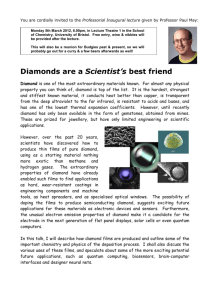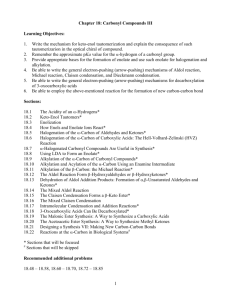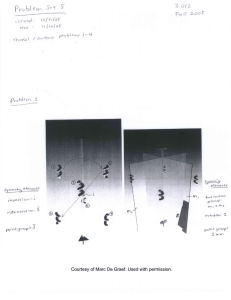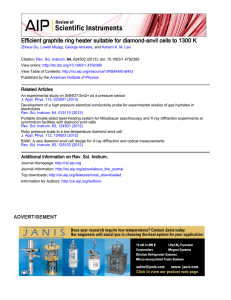Element name: Carbon
advertisement
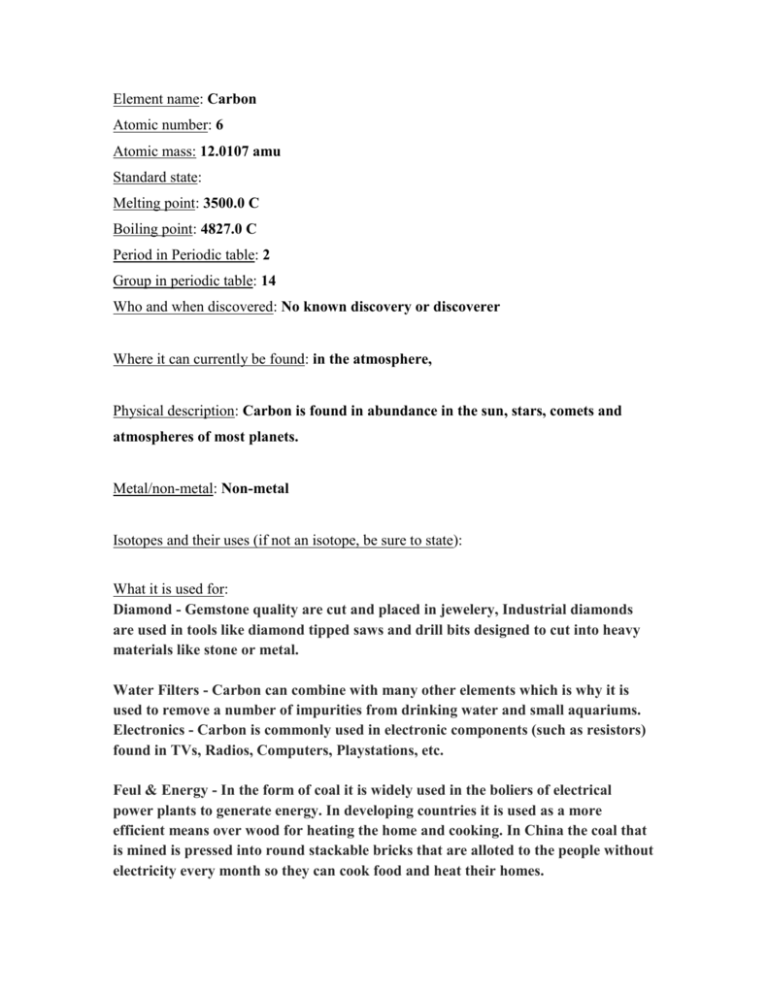
Element name: Carbon Atomic number: 6 Atomic mass: 12.0107 amu Standard state: Melting point: 3500.0 C Boiling point: 4827.0 C Period in Periodic table: 2 Group in periodic table: 14 Who and when discovered: No known discovery or discoverer Where it can currently be found: in the atmosphere, Physical description: Carbon is found in abundance in the sun, stars, comets and atmospheres of most planets. Metal/non-metal: Non-metal Isotopes and their uses (if not an isotope, be sure to state): What it is used for: Diamond - Gemstone quality are cut and placed in jewelery, Industrial diamonds are used in tools like diamond tipped saws and drill bits designed to cut into heavy materials like stone or metal. Water Filters - Carbon can combine with many other elements which is why it is used to remove a number of impurities from drinking water and small aquariums. Electronics - Carbon is commonly used in electronic components (such as resistors) found in TVs, Radios, Computers, Playstations, etc. Feul & Energy - In the form of coal it is widely used in the boliers of electrical power plants to generate energy. In developing countries it is used as a more efficient means over wood for heating the home and cooking. In China the coal that is mined is pressed into round stackable bricks that are alloted to the people without electricity every month so they can cook food and heat their homes. Graphite - The "Pencil Lead" for wooden and mechanical pencils. A dry lubricant commonly used on small mechanical devices like locks and hobby motors of miniature vehicles. Drinks - By mixing with oxygen in the form of Carbon Dioxide it allows for the bubbles in soda. Food - In the form of baking soda (Sodium Bicarbonate) it creates gas bubble that make cookies and cakes light and airy. Steel - The strong and common alloy is made by adding carbon to iron. Simple Calories - Carbon in one of the key elements in the sugars and starches that make up the carbohydrades in food. The subtances are typically plant-based in origin and are the easiest to breakdown into energy. Nano Tubes - An experimental "artificial muscle" consisting of strong microscopic carbon structures that can flex and contract with electrical current. Aerospace Engineering - New aircraft and spacecraft hulls are made of overlapping layers of woven carbon fiber material and heated resins. The combined layers are stronger and lighter than the traditional aluminum panals that make up older aircraft and space craft skins. What makes your element unique and special: -Carbon is the basis for organic chemistry, as it occurs in all living organisms. -Carbon is a nonmetal that can bond with itself and many other chemical elements, forming nearly ten million compounds. -Elemental carbon can take the form of one of the hardest substances (diamond) or one of the softest (graphite). -Carbon is made in the interiors of stars, though it was not produced in the Big Bang. -Carbon is the fourth most abundant element in the universe (hydrogen, helium, and oxygen are found in higher amounts, by mass).



